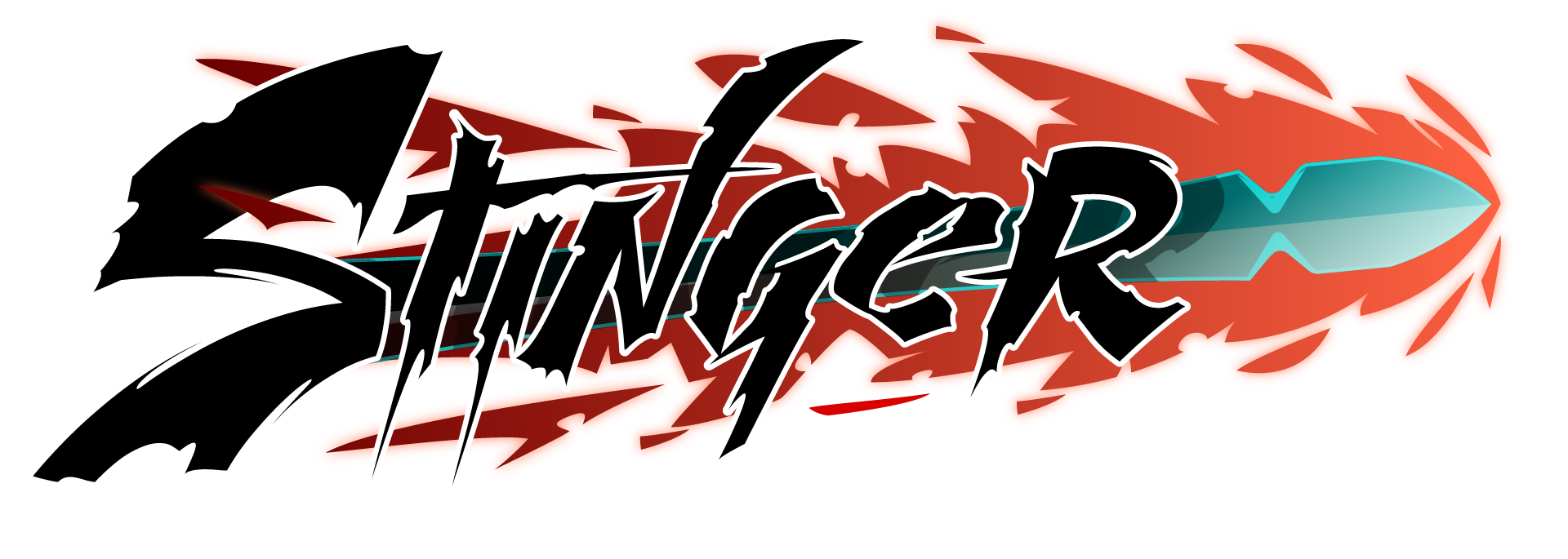No matter how simple an action game’s design is, there’s always the moving parts to keep it afloat. A single fight can play out one of a dozen ways, just on the basis of an enemy going left instead of right. What if everything goes on a straight path however, where then does the interaction come from?
Panzer Dragoon Orta has to deal with that predicament. Despite being described as a ‘simple railshooter’, the Panzer Dragoon series wowed the world in the ‘90s with its cutting-edge 3d graphics and ability to turn the camera 360 degrees to attack enemies from all sides. This concept was pushed further with Panzer Dragoon Zwei and later successfully transitioned into a cult classic roleplaying game titled Panzer Dragoon Saga – all developed by Sega’s own Team Andromeda.
Feeling that Saga was a good way to close off the series, and paired with an upcoming restructuring of the company, Team Andromeda was disbanded and its series laid to rest. Or at least, so it seemed. With Sega soon after exiting the console-manufacturing market and offering support to Microsoft’s new Xbox, concepts and ideas of a new Panzer Dragoon started appearing. Headed by the series’ battle-designer Akihiko Mukaiyama, now working for Smilebit, development of Panzer Dragoon Orta soon started, eventually releasing in at the end of 2002.

From the outset, Panzer Dragoon Orta plays as you’d expect from a railshooter. Your dragon moves on a linear path towards the end goal, with enemies appearing from predetermined paths and with often scripted attack-patterns. The unique aspect being that, like in previous Panzer Dragoon games, you can use the shoulder buttons to turn the camera to the left, right and back to attack enemies from those sides.
This starts out intimidating, with the first level already offering quite some resistance coming from all sides as protagonist Orta escapes from her prison. You’ll panic as you check your radar and turn to your left, only to see enemies swarming you from the right, crushing your healthbar and flying off into the distance as you see your first game-over screen. It’s a type of pressure you’ll get used to, but it’s interesting to see a game immediately put players in such a situation from the get go. It doesn’t loosen up until the second mission either, only to then slowly ramp up the difficulty again until it peaks in its tenth mission.
As mentioned in the introduction, while action-games have the distinct advantage of sheer number of variables, rail-shooters play a different game. It starts as one of reaction and then quickly turns into one of optimization. Where enemies in the first stage first confuse you, later you turn your angle to them before they arrive, knowing they’d appear, and shoot them down with your homing-laser for maximum points.
Many railshooters have tried to give extra incentive or mechanics to make it feel more active, like Time Crisis’ usage of cover, Sin and Punishment’s more free-walking sections to Rail Chase 2’s branching paths or Star Fox’s hidden missions.
For Orta, it’s her Dragon’s three distinct forms and the abilities that lay within that aim to shake up the game.
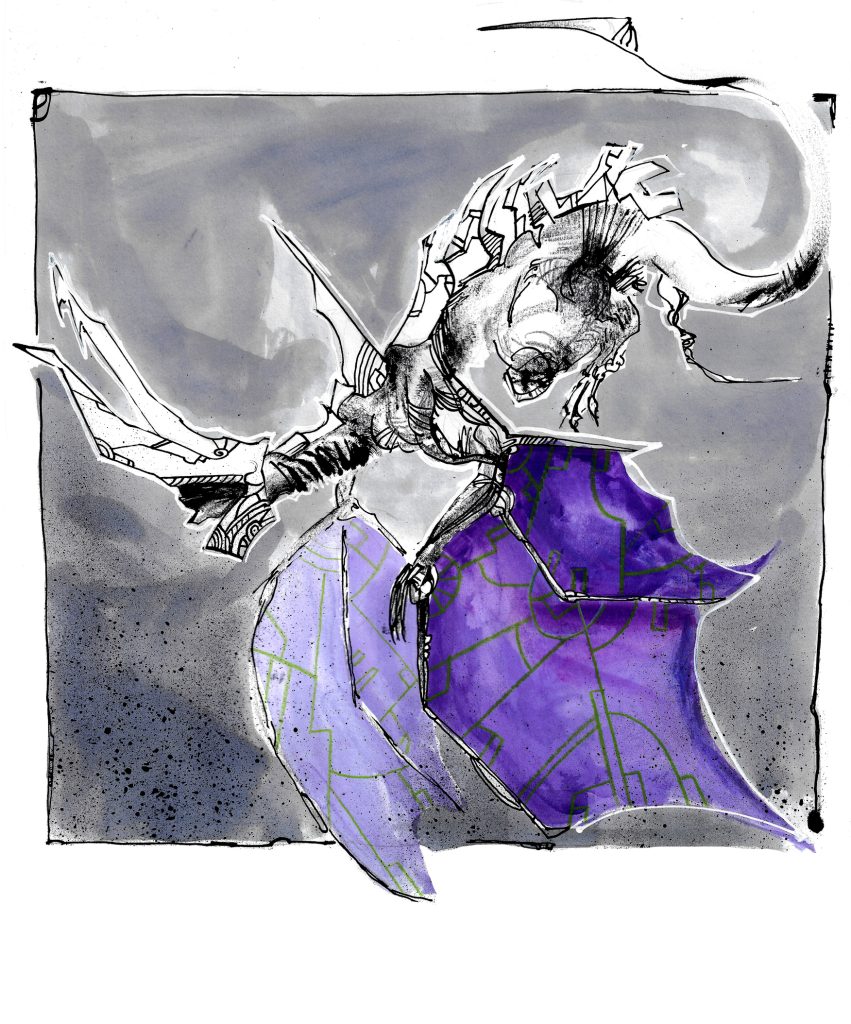
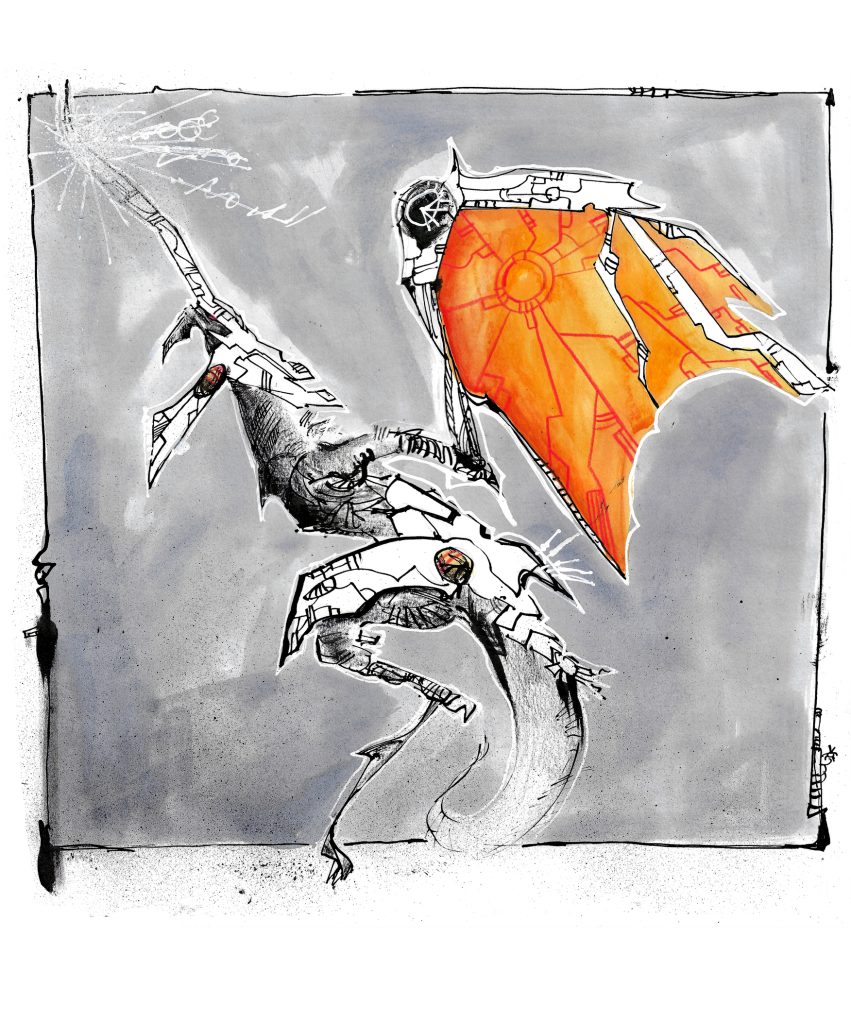

The original form, aptly titled Basic Wing, boosts the ability to lock onto 10 targets before firing and has a rapidfire gun. Most importantly, it can use the game’s Glide ability. Pressing the X-button sees you speed up, while pressing B slows you down. While hardly having an impact on the speed at which you blaze through the level, this ability allows you to zoom past incoming attacks or even ram enemies with your sudden burst of speed. Meanwhile the brake can slow you enough to attack advancing enemies from the rear or avoid specific attacks – already offering more complexity and experimentation per fight than just memorising spawn points.
The second form is called Heavy Wing, whose name also leaves little to the imagination. It focusses on dealing large damage per homing shot but fires slower and with fewer shots. Most notably however is that it cannot use the glide ability to speed up or down.
Lastly there’s Glide Wing, which not only takes less damage than the others but also has the ability to glide three times instead of two before it needs to recharge. Its gun also auto-aims, but lacks a lock-on projectile. Meaning you just hold down the A-button and a constant stream of weak lasers shoot towards your foe instead of the more bombardment projectiles of the other Wings.
Returning from Panzer Dragoon Zwei are the Berserk Attacks. When charged this attack offers each form a unique ‘get out of jail freecard’ unique to each Wing. While Basic Wing attacks the entire screen with high damaging shots, Heavy Wing focuses on a single target with its powerful laser. Perhaps most interesting is Glide Wing’s Berserk Attack which deals very little damage but heals you for every hit it lands. This is your only way of healing mid-stage; punishing bad players by forcing them to use the weakest super-move to heal while good players use the more powerful ones instead. This is compounded by the game’s already high difficulty and high punishment for dying, you either reset at the start of a bossfight or it’s back to the beginning of the stage for you.
A good way to show how these forms function is one of the game’s sixteen bosses, for example the Episode 2 boss: Ikrakav. Being a floating plant, it is on one side covered with an impenetrable shell, while the other side shows its open innards ready for a pounding.
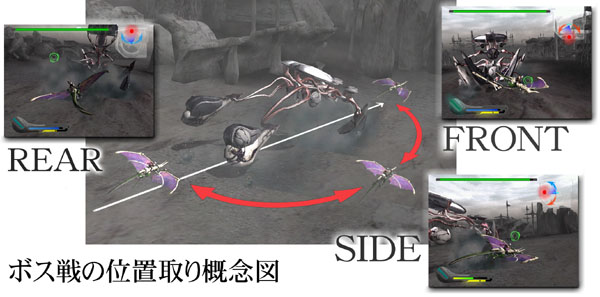
When the fight begins you immediately see the weakpoint in front of you. Then it quickly turns around, forcing players to use glide twice to get in front of it again. Once there the player has to quickly lay on pressure with Heavy Wing while juggling incoming projectiles which are best shot out of the sky with Glide Wing’s autoaim, before Ikrakav turns around again and the dance continues until it succumbs.
This concept is pushed further in later bosses like in Episode 8, where you’re constantly brake-ing to get behind certain parts of the boss to hit a weakpoint and then accelerating to get ahead of him, while dodging lasers coming from all sides, shooting missiles out of the air and much more – all while still switching to Heavy Wing in the interim to deal damage.
Now, attentive readers will have noticed that the above examples mostly omit the Basic Wing. While Heavy – and Glide Wing are distinct, Basic Wing gets the short end of the stick, not having something unique to really justify its existence. If you want damage you use Heavy Wing. If you need to focus on avoiding shots you use Glide Wing… leaving Basic in the dust.
Still, due to their uniquness the game manages to forgo the typical “use the Red Dragon form to kill the Red Enemy”, and instead urges player creativity within it. Sure, you can avoid those shots by simply switching to Glide Wing, but maybe you can brake to avoid them, allowing you to quickly switch to Heavy Wing and get in some extra shots for a quicker kill. In time players might even realise that in some points of the game they can sometimes choose a direction simply by leaning more left or right, adding some routing to the game.
Due to the relative short length of its levels, which generally take about 10 minutes, it’s easy to go back and replay them for different tactics or abilities to use in specific scenarios – essentially turning it into a high octane puzzle where you get to make your own solution.
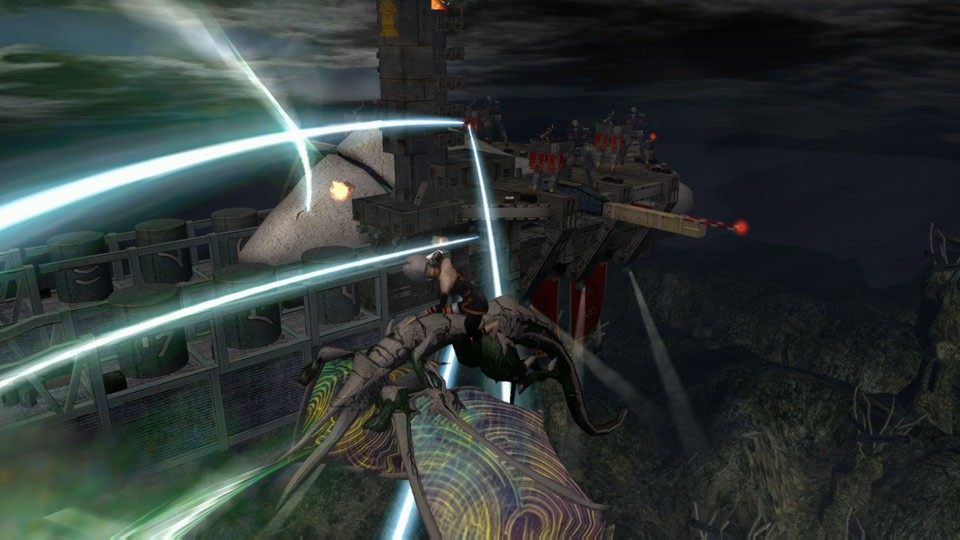
At its best, Panzer Dragoon Orta offers you constant decisions from every angle, forcing you to compromise as best you can with the forms avoidable to you and your speed options. All of which in turn leads to a better performance, a higher rank and of course – most importantly – bigger player satisfaction.
On your road to mastery there are also other little extras to play with, like different pilots to ride your dragon, unique side missions with extra stories, a survival mode and even the original 1995 Sega Saturn game as an unlockable. Some require hard challenges to unlock, like beating the entire game with an A-rank or beating the game without being hit more than 44 times. Surprisingly, the game will unlock everything for you if you’ve played the game for 20 hours.
This, strangely, does highlight an issue with the game. As for many players, the in-game clock will barely reach the ten hour mark before most of the game’s extra’s are unlocked. While the game has a brutal start, its short length means it has to fight for holding your attention long enough with its ten episodes. Even going for things like S-rank runs might only see an hour or two added to the total counter at best.
Yet, once you’ve started playing, it’s hard to stop. Be it the imaginative locations, the almost alien music score, the flashy animations with snappy sound effects to the fast gameplay, the fun is there and you’ll want to keep playing. There’s always an enemy you’ve missed or a fight where you think “hm, what if I do that instead”. And it is here that Panzer Dragoon Orta opens up in its biggest way through a highly customizable menu called Box Mode.
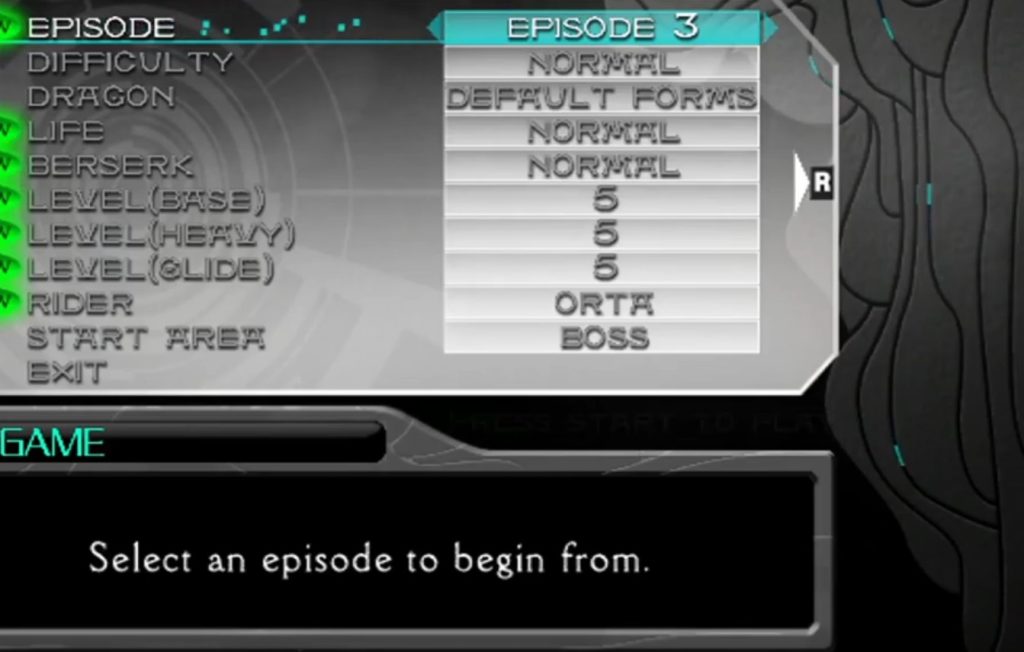
Unlocked after beating the game on Hard difficulty, which mostly ups enemy damage and aggression, Box Mode is like a campaign customizer. Disallowing scoring, it simply asks you questions: have you tried beating the final boss with infinite berserk mode and infinite health and seeing just how fast you can do it? Have you tried beating Episode 3 while a single hit kills you? Are you in the mood for a bossrush today? Or maybe you’d want to play with one of the 7 unlockable ships that each play differently from each other?
It is here that Orta really shines. It grabs you hard from the start, plunging you in the deep end and once you reach the surface it keeps you coming back for more, optimising a bit here and there, looking for new paths or new openings, while Box Mode offers fun optional modifiers to keep each replay just a bit fresh. Through playing this mode you’ll quickly come to realise that at higher levels of play, Panzer Dragoon Orta isn’t a game you’ll play for 40 hours on end. Instead it’s a game you’ll often find yourself inserting in your trusty Xbox for just a few minutes before playing something else. But unlike those other games, you’ll never truly put Orta down…
… but it is also because of its rough first playthrough, its lust for optimization and dedication for its dragon-form mechanic, that many new players stumbled. Which in turn saw Orta itself struggle in sales, ending the series before the new team got a chance to get it going.
While recent updates saw it return to the next generation of Xbox through Backwards Compatibility and the original Panzer Dragoon got a graphical remake in 2020, the series has yet to see a true successor. While the genre has moved on in its absence since, with releases like Umbrella Chronicles’ bigger emphasis on story and exploration within the railshooter, to Until Dawn Rush of Blood’s foray into VR…Panzer Dragoon Orta’s exploration of movement and unique weapon options within its linear genre are sorely missed.
One can only hope that one day in the future, the series as a whole becomes more easily available for modern audiences and gains the sequel it deserves. Paving the way for more interesting concepts, because as Panzer Dragoon Orta shows: linearity is only a limitation if you let it.
鑒 reflection style 鑒
In this short section I reflect on the article from my own viewpoints as a gamer and lover of the genre instead of a critic.
This article took some doing, not because it was hard to describe, but it was hard for me to lay down a focus. This is mostly due to the constant push I see in online reviews on player incentive, and how games should reward exploration of mechanics. Personally, I’m more of a believer in the mantra of Shigeru Miyamoto. When describing his design of Super Mario Bros. gameplay, he noted (and I’m paraphrasing here) that it wasn’t about the coin offering a reward, but the coin being fun to get. This entails a fun sound, animation for getting it and often a little challenge to go with it making getting it even more fun.
Orta is this to me. I could talk for days about how I feel its ranking system isn’t the best, or how Basic Wing indeed needs more attention – but the main thing I had with Orta was fun. Fun exploring its levels. Fun trying out new tactics with its increased mobility. Fun playing with the bosses and edging out new wins under different conditions.
I did this because what was there, at the core, was fun. Swapping between forms is snappy, fast, visually cool and each dragon has cool looking moves while you pilot them through awe inspiring levels, each with a unique feel. It was that alone, and its magnificent soundtrack, that pushed me to beat the game, even when the final boss’s multiple forms made me rethink my purpose in life once or twice.
As a result it’s become a game I find myself often just booting up for a few minutes before playing something else, a feeling I wanted to communicate through the article. Oftentimes I see players burn themselves out of a game which might be better enjoyed in bursts, a comment I often offer in the defence of a title like Ninja Gaiden 3: Razor’s Edge as well.
Not every game needs to be pumped out within a few months, to then fall on the pile to never be looked at again. Some just want a looksy, every once in a while.
斬 postscript notes 斬
- The game sports seven total ships, offering nice variation in play. That said they all feel like a less interesting version of the original dragon you pilot. With each ship only offering a single gun and sometimes no unique Berserk or just a reskinned Berserk than really offering a new way to enjoy the game unless you’re really hurting for new excuses to replay this game. That said, within the limitations of the game they work nicely, each offering a twist though lacking the complexity of the original ship. One has infinite lock-ons for example, while the other has high base damage, but some are more challenging ships while others like Panzerwing can just decimate the final boss in a single berserk strike.
- I personally tended to avoid games like this, until the Gummi Ship missions from Kingdom Hearts, most notably those from its second game, inspired me to look more into them. The over the topness and action-packed nature of its onrails shooter levels hooked me and showed me a side of the genre I hadn’t considered. With Panzer Dragoon Orta always having looked cool to me, with its mysterious artwork and creature designs, I decided to buy an original copy.
- Originally part of the article was the note of Basic Wing’s only real redeeming feature, namely in attaining a high-score. Due to the way scoring works, with you getting the most points if you kill as many enemies in a single lock-on, Basic at times sees use in specific scenarios at best. In general I omitted notes on the scoring system since it mostly rewards what you’d expect, high lockon kills, killing everything, not getting hit and being fast (thus efficient) with bosses. This was omitted since the scoring system wasn’t too interesting and the article was losing flow due to its inclusion.
- Developer Smilebit had worked on Jet Set Radio in the past. As a result, original concepts of the game contemplated a cel-shaded design, but this never got past the concepting phase.
- The game was made by only 25 people in total at Smilebit!

